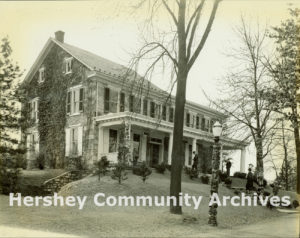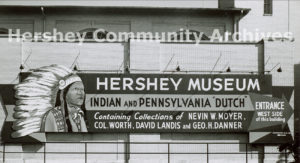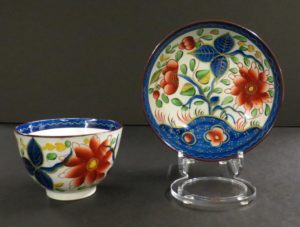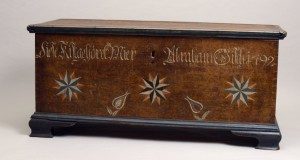HersheyArchives@30, Part 14: Building a Museum for Hershey – The Danner Collection

From 1903 until his death in 1945, Milton Hershey was committed to creating an exemplary model industrial town for his workers and their families. Historically, model industrial towns featured housing and an infrastructure built and maintained by a company and inhabited by the company’s workers. Milton Hershey’s vision for his model town was broader and he created a culturally rich community through the construction and continued funding of an array of educational and cultural institutions.
While the establishment and funding of the Hershey Industrial School (now Milton Hershey School), is well-known, Hershey’s support of education actually began with the Derry Township Public School District. Mr. Hershey funded the construction of a consolidated public school in 1904, while the chocolate factory was under construction. Over the next four decades Mr. Hershey financed the construction of additional public school facilities on Granada Avenue and established Hershey Junior College. Hershey residents also benefited from the addition of cultural attractions that were unusual for a rural Pennsylvania community, including: Hershey Zoo, Hershey Theatre, Hershey Gardens, and the Hershey Museum.
Hershey’s first museum, the Hershey Indian Museum opened in 1933 in a residential building on Derry Road adjacent to the chocolate factory. It displayed Native American artifacts collected by John G. Worth. Milton Hershey purchased the collection, wanting to establish a museum for his community.
The museum’s collection expanded on October 28, 1935, when Milton Hershey purchased the George H. Danner Museum Collection from Monroe M. Pfautz, Danner’s business partner, executor, and family friend to the Hershey family, for $50,000. George H. Danner, a Lancaster County native intrigued by objects from the past, collected artifacts related to everyday aspects of traditional Pennsylvania German life from the late 1800s until his death in 1917.
Danner’s collection featured everyday items from the eighteenth and nineteenth centuries; most notably, 2,000 pieces of English ceramics, glassware and textiles. The collection also contained traditional Pennsylvania German furniture and Danner family heirlooms.
Originally, George Danner displayed his collection on the top floor of his general store in Manheim, Pennsylvania. Danner had hoped that his heirs would establish a proper house museum for his collection using funds from his estate. Unfortunately, this plan never came to fruition. Milton Hershey’s interest in the Danner collection was spurred by the success of the Hershey Indian Museum. Milton Hershey arranged to purchase the collection for the cultural enrichment of the community.
In 1938, both collections were put on display in the new Hershey Museum after it moved into the recently renovated Convention Hall. Hershey’s purchase of the George H. Danner Collection is merely one of many examples of Hershey’s dedication to creating a rich cultural environment for the people of Hershey, Pennsylvania.
The Danner Collection has been a key component of the Hershey Museum’s collection since Milton Hershey purchased it in 1935. While the Archives holds the insurance ledger, documenting the acquisition of the collection, the artifacts and documentation of this collection continue to be held by The Hershey Story, the Museum on Chocolate Avenue.
#HersheyArchives@30





